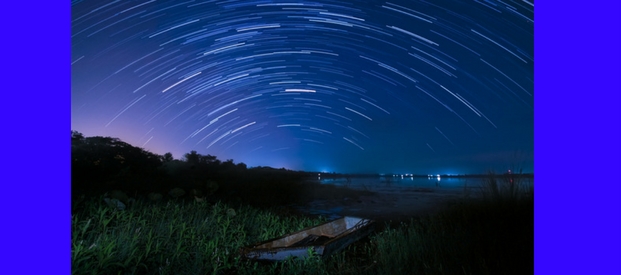Top Tips for seeing Shooting Stars on 12 August
Prepare for a late night this Friday, 12 August, and you could see an amazing celestial display of up to 80 shooting stars in just one hour! As the Perseid Meteor Shower reaches its peak on the night of Friday 12 August, we share some top tips for how to see the most meteors, and ask the question: just what is a shooting star?
What is a shooting star?
A shooting star, or meteor, is usually a tiny piece of space dust left behind by a comet. It burns up in our atmosphere and leaves a bright streak of light in our sky. The Perseids are made of tiny space debris from the Comet Swift-Tuttle and can be seen each year in July and August. At the peak of the Perseid Meteor Shower, 60-100 meteors per hour are normally visible from a dark place. The Perseids are named after the Perseus constellation because the meteor shower appears to come from this direction.
This year’s Perseid Meteor Shower can be seen from 23 July right through to 20 August. The rate of meteors will be at its highest on the night of 12 August as we pass through the most dense part of the dust cloud left behind by Comet Swift-Tuttle. The number of meteors likely to be visible will be affected by moonlight, and on 12 August the moon will be eleven days into its cycle, less than a week off full moon, so its brightness will make it difficult to see the fainter Perseids. This means that this year 80 meteors per hour are predicted to be visible from the right place in the right conditions.
Top tips for the best chance of seeing shooting stars
You can’t change the brightness of the moon or the extent of cloud cover, but there are things you can do to give yourself the best chance of seeing shooting stars.
Pick your time: This year’s Perseid Meteor Shower will be at its peak on the night of 12 August. The moon will be bright in the sky until after midnight so the chances of seeing shooting stars will increase as the night gets darker from 1am and towards 4.30am on 13 August. Most astronomers say the best time is right before dawn.
Know where to look: Anywhere in the sky about two thirds up from the horizon is a good place to look for meteors. To be more precise, the Perseids appear to come from the north east, from the constellation of Perseus, from a point called the ‘radiant’. But you are more likely to see a meteor trail when you look a little way away from this point. So look up to find the patch of sky directly above your head, and then choose a point half way between this and the radiant, and you’re looking at a prime spot for seeing meteors!
Know how to look: Look with your naked eye and not with binoculars or a telescope as these will reduce your field of vision. It takes 20 minutes for your eyes to adjust to the dark, so keep lights switched off and avoid the temptation to check your mobile phone as the light from the screen will affect your eye’s ability to see well in the dark.
Choose a dark place: If you’re in the town or city, the street lights and other light pollution will make it impossible to see all but the brightest Perseids, so if possible, head for a dark place in the countryside or near the coast.
There are some great places in the UK with skies ideal for stargazing. Go north to Scotland, to Galloway Forest Park – Britain’s first Dark-Sky Park, just two hours from Glasgow. Or head south to Exmoor, awarded International Dark-Sky status in 2011. Go west to Mid Wales where Powys has some of lowest light pollution in Britain, or travel east to Kielder Forest in Northumberland, officially the darkest place in England.
Most important of all, wherever and whenever you choose to do your meteor spotting, the secret is to be comfortable! So take a blanket or a recliner, dress in warm clothes, fill the thermos with something hot, and then relax, watch, and enjoy the magnificence of the night sky!










